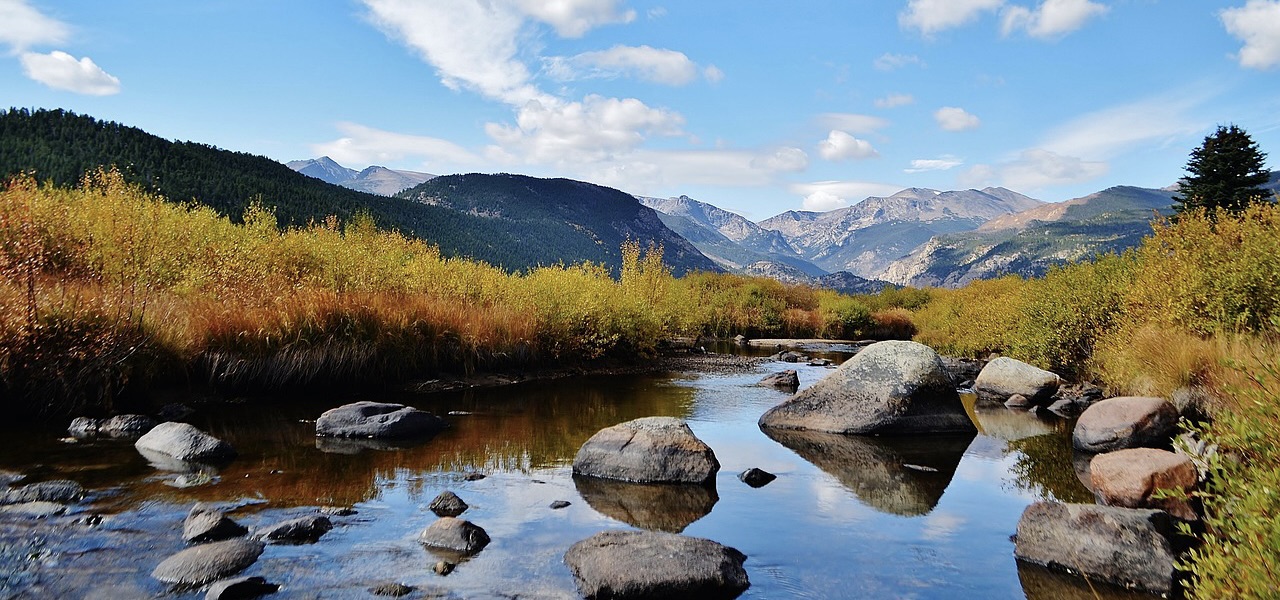Across the United States, national parks preserve some of the most awe-inspiring landscapes in the world. These places whisper of God’s creativity, majesty, and care. Whether you’re longing for ocean views, towering trees, or misty mountains, these parks offer unforgettable hiking trails and a chance to reconnect with nature and with yourself. Let’s take a look at six national parks especially known for natural beauty and hiking.
I included information about the America the Beautiful pass in my article about parks in the Midwest, but I want to include it here as well….
The America the Beautiful Pass
It’s worth noting that U.S. citizens and permanent residents aged 62 and older can buy an annual America the Beautiful Pass for $20 or a lifetime pass for $80. Proof of age and citizenship or residency is required. (Prices may change.)
The America the Beautiful Pass offers some great perks:
- It covers entrance fees for national parks, national wildlife refuges, and other federal recreation areas.
- It includes day-use fees at many national forests, grasslands, and Bureau of Land Management sites.
- If the site charges per vehicle, the pass covers everyone inside.
- If there’s a per-person charge, it typically covers up to four adults (kids under 16 are usually free).
It’s a fantastic way to explore beautiful outdoor spaces while saving money!
The National Park Service has an app with information about national parks across the country.
Use the table to jump to information about particular national parks:






Redwood National Park in California
Step into a world of giants among the tallest trees on Earth. These ancient redwoods rise like natural cathedrals, while fern-covered canyons and fog-kissed trails invite wonder at every turn. Don’t miss Fern Canyon or the peaceful Lady Bird Johnson Grove.
Redwood National and State Parks are far more than a forest of towering trees; they’re a gateway to diverse adventures and natural wonders. With five visitor centers scattered throughout the parks, travelers can stop in for maps, advice, and exhibits that bring the area to life. From ranger-led programs to park stores operated by the Redwood Parks Conservancy, there are plenty of ways to deepen your experience and take a piece of the redwoods home. Whether you’re short on time or planning an extended stay, visitor centers like Hiouchi, Jedediah Smith, Crescent City, Prairie Creek, and Thomas H. Kuchel each offer something unique. Just be sure to check current trail and road conditions before your visit, as closures may occur.
The parks offer a rich mix of scenic drives, hiking trails, and bike routes that reveal the redwoods from every angle: misty coastal paths, sun-dappled forests, and sweeping vistas. While camping is available within the parks, all hotels and other accommodations are found just outside park boundaries, making it easy to enjoy a day of exploration followed by a restful evening nearby. No matter how you travel (on foot, by bike, or behind the wheel) there’s something awe-inspiring around every bend in this incredible stretch of northern California.
Zion National Park in Utah
A masterpiece of red rock carved by time, Zion is a desert sanctuary filled with breathtaking canyons and daring hikes. The Narrows lets you walk through the river itself, while Angels Landing rewards the bold with sweeping views (and a big dose of adrenaline).
The Zion Wilderness encompasses a breathtaking landscape of vibrant canyons, forested mesas, and stark desert beauty. With over 124,000 acres designated as wilderness in 2009, this protected area makes up 84% of Zion National Park. It’s a place where nature remains largely untouched, and human presence is temporary. To explore these remote and fragile areas, wilderness permits are required for a range of activities, including overnight backpacking, canyoneering, and through-hiking the Virgin River Narrows. These permits help manage visitor impact, protect natural resources, and provide important safety information.
Adventuring in the Zion Wilderness comes with both awe and responsibility. Visitors must be prepared for the realities of nature, including unpredictable hazards like flash floods, rockfalls, and wildfires. Because cell service is unreliable in most parts of the park, careful planning is essential. A permit does not guarantee trail access because conditions may change at any time. Always have a backup plan. Staying safe means making informed decisions, checking current conditions, and prioritizing the well-being of your group. With care and preparation, exploring Zion’s wild side can be an unforgettable and rewarding experience.
Glacier National Park in Montana
With shimmering alpine lakes and rugged peaks, Glacier is a hiker’s dream. The Highline Trail offers panoramic vistas, while trails like Iceberg Lake bring you face to face with icy waters and wildflowers. Raw, remote beauty.
Glacier National Park’s famous Going-to-the-Sun Road is a stunning alpine drive, but its seasonal opening depends on unpredictable weather. Typically open by mid-July, portions of the road (like those leading to Apgar Village and Lake McDonald Lodge) remain accessible year-round. Visitors should regularly check road conditions online, as updates happen in real-time. The park’s campgrounds offer both reservation-based and first-come, first-served options. While some feature amenities like showers, others operate in primitive status without running water or flush toilets. Group sites are available at several campgrounds and can be reserved in advance through recreation.gov.
For those planning to hike, trail access also varies by season. High-elevation trails such as the Highline and Grinnell Glacier trails may remain snow-covered well into July, while lower trails open earlier in spring. Visitors can check daily trail status reports at any of the park’s visitor centers. Ranger-led programs such as hikes, talks, and astronomy nights run from late June through September. Fun for all ages!
Acadia National Park in Maine
Where the mountains meet the sea, Acadia shines with rocky coastlines, carriage roads, and forested hikes. Cadillac Mountain is famous for sunrise views, and the Jordan Pond Path offers gentle beauty that’s perfect for reflection.
Acadia National Park offers more than 150 miles of hiking trails that take you through forests, along rugged coastlines, and up to rocky mountain summits—sometimes all in one unforgettable trek. Whether you’re up for a challenging climb from sea level to scenic peaks or prefer a peaceful stroll around a lake, there’s a trail to match your pace. Many paths can be paired with carriage roads and fire roads, creating custom routes through the park’s diverse landscapes. Most trails are loops or can be linked into one, offering fresh views the entire way. Want to skip the parking hassle? Hop on the free Island Explorer to reach trailheads and craft longer hikes with different pick-up and drop-off points.
Before you head out, take a moment to brush up on safety tips and trail rules. Stick to marked paths, carry plenty of water, and wear sturdy shoes. Keep pets leashed and off ladder trails, and never feed wildlife or disturb their natural behavior. Swimming and fires are only allowed in designated areas, and backcountry camping isn’t permitted. For the best experience, check for trail closures online or at visitor centers and bring a topographic map. Acadia’s natural beauty is breathtaking as long as we explore it responsibly.
Rocky Mountain National Park in Colorado
High-altitude drama meets quiet alpine lakes in this iconic western park. From easy strolls around Bear Lake to challenging climbs like Sky Pond, the Rockies are filled with wildflowers, wildlife, and wide-open skies.
Spanning 415 square miles, Rocky Mountain National Park is a showcase of alpine beauty and mountain adventure. From wildflower-strewn meadows to sparkling lakes and towering peaks, the park offers an incredible variety of landscapes to explore. With more than 350 miles of hiking trails, you can choose a gentle walk, a challenging summit, or something in between. Wildlife sightings are a frequent bonus; keep an eye out for elk, marmots, and soaring birds of prey as you explore.
There’s no shortage of ways to enjoy the outdoors here. Visit a park visitor center for tips, maps, and ranger-led programs, or strike out on your own for winter hiking, ice fishing, snowshoeing, or scenic drives that offer jaw-dropping mountain views. Trails vary in length and difficulty, making it easy to find the perfect route for your pace and interests. Whether you’re in boots, skis, or snowshoes, Rocky Mountain National Park offers year-round adventure with stunning views in every direction.
Great Smoky Mountains National Park in Tennessee and North Carolina
Great Smoky Mountains National Park straddles the North Carolina–Tennessee border with layers of forested ridges, rich biodiversity, and deep cultural history. It’s the most visited national park in the U.S. Hikers can enjoy over 800 miles of trails in every season: spring’s wildflowers, summer’s cool mountain streams, fall’s vibrant foliage, and winter’s surprising views through leafless woods. Trails lead to waterfalls, old-growth forests, and scenic vistas like Charlies Bunion, Andrews Bald, and Chimney Tops. Whether you’re after a quick outing or a full-day trek, there’s a path for every interest and ability.
Before you head out, think through what kind of experience you’re after—views, waterfalls, or history—and be realistic about distance and timing. Five miles roundtrip is a smart max for beginners. Bear spray is allowed for protection but must meet park regulations, and overnight backcountry trips require permits. Hike early to avoid being caught out after dark; most visitors average 1.5 miles per hour on the trail. If you’re bringing kids, try one of the park’s many family-friendly options. Be sure to check trail closures before heading out. With a little planning, your Smokies adventure will be safe, stunning, and unforgettable.

Your invitation to wonder
You don’t have to be an expert hiker to soak in the beauty of these national parks. Just bring your curiosity, your willingness to slow down, and maybe a journal to capture what stirs you. Whether you’re planning a future trip or simply dreaming from your desk, may these glimpses of the beauty in our national parks inspire you.
Where would you go first? Have you already been to one of these parks? If so, share a highlight in the comments below.
Other posts you may like:
- Visiting Mammoth Cave National Park
- 18 notable parks in the Midwest
- How to Know a Person by David Brooks: five stars!
- author Annah Conwell: read, swoon, repeat
- author Christina Dudley: delightful historical romance
- fudgy mug brownie
- The Berlin Apartment by Bryn Turnbull: historical fiction spotlight
- cozy calendar: fun fall checklist
Fondly,
Crysti



Thank you for this helpful overview of 6 national parks to visit. I’ve been to Redwoods, Zion, and Glacier, but have not ventured to Acadia, Rocky Mountain, nor Smoky Mountains. Those places are definitely on my list for after retirement!
I think Acadia is next on my list, Lisa!
Thanks a lot for sharing this helpful information about these 6 national parks to wander in wonder. I’ve never been to the USA, so I am bookmarking this page. I’ve only heard about the Rocky Mountain National Park.
There are SO MANY glorious parks here! I hope you get to visit, Hadassah!
I love these stunning highlights of six national parks that are especially known for natural beauty and hiking! I’ve been to a few and loved Zion! I’m hoping to check Acadia off my bucket list soon!
Me too, Debbie! I would love to go to Acadia!
I love this list of 6 national parks for unforgettable hikes and stunning views. Thanks a lot for putting it together.
You’re welcome, Hari! So glad you like it.